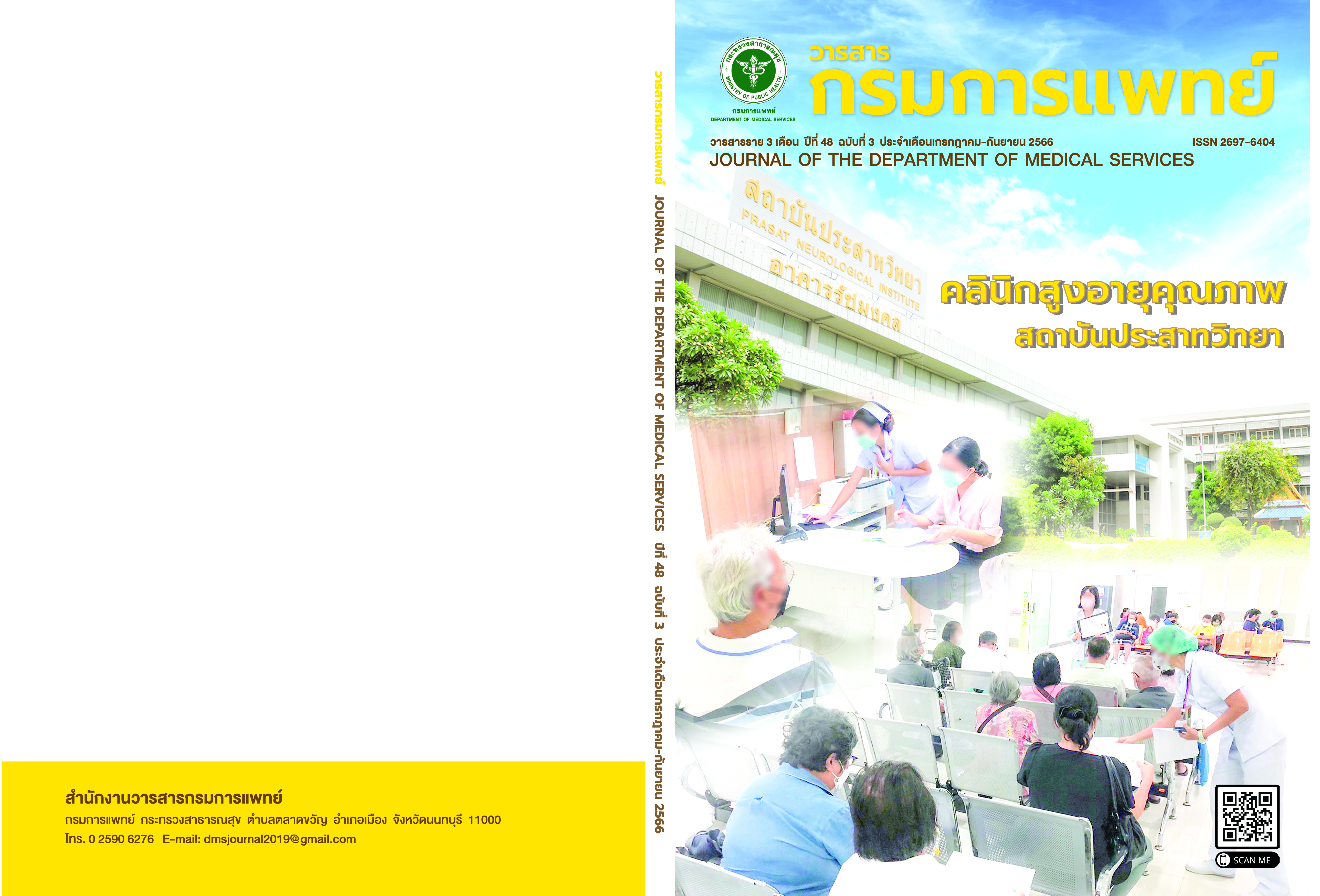Enhancing Coronary Artery Disease Prognosis with Artificial Intelligence: A Study on Radionuclide Myocardial Perfusion Imaging
Keywords:
Myocardial perfusion imaging, Artificial intelligence, 4DMSPECT, QGSQGPS, Corridor 4DAbstract
Background: Radionuclide myocardial perfusion imaging is widely used as it is a non-invasive method. However, it still requires correlation with invasive procedures such as cardiac catheterization. Nevertheless, there are several different software packages and instruments used. The study of artificial intelligence to assist the nuclear medicine physician for coronary artery disease prognosis will make it more accurate, precise, as well as reduce unnecessary invasive procedures. Objectives: 1. To find the correlation between the results from the nuclear medicine physician and from artificial intelligence 2. To compare the accuracy between the result from artificial intelligence created by different instruments and software packages 3. To study the quantitative value of the different software packages from the one used for generating the artificial intelligence Methods: A retrospective collection of 501 patients was conducted to assess the correlation between nuclear medicine physician reports and artificial intelligence. Quantitative analyses were performed using Corridor 4D and QGSQPS and compared to 4DMSPECT. Additionally, the accuracy of artificial intelligence in SPECT/CT model 870 DR and data reconstructed with QGSQPS and 4DMSPECT operated with SPECT model Infinia were compared. Result: The correlation between the report from the nuclear medicine physicians and artificial intelligence was low (r = -0.006). The correlation between 4DMSPECT and Corridor 4D was between 0.39-0.96, while the Corridor 4D and QGSQPS were between 0.26-0.89. The sensitivity and specificity of the artificial intelligence operated with SPECT model Infinia and data reconstructed with 4DMSPECT were 49.0% and 63.1%, while the one operated with SPECT/CT model 870 DR and data reconstructed with QGSQPS software were 75.6% and 35.3%, respectively. Conclusion: This version of artificial intelligence cannot be used in clinical practice due to its low accuracy and wide range of correlations between software packages. The next improved version will be studied and used in clinical practice.
References
Laslett LJ, Alagona P Jr, Clark BA 3rd, Drozda JP Jr, Saldivar F, Wilson SR, et al. The worldwide environment of cardiovascular disease: prevalence, diagnosis, therapy, and policy issues: a report from the American College of Cardiology. J Am Coll Cardiol 2012;60(25 Suppl):S1-49.
Fihn SD, Gardin JM, Abrams J, Berra K, Blankenship JC, Dallas AP, et al. 2012 ACCF/AHA/ACP/AATS/PCNA/SCAI/STS guideline for the diagnosis and management of patients with stable ischemic heart disease: a report of the American College of Cardiology Foundation/American Heart Association task force on practice guidelines, and the American College of Physicians, American Association for Thoracic Surgery, Preventive Cardiovascular Nurses Association, Society for Cardiovascular Angiography and Interventions, and Society of Thoracic Surgeons. Circulation 2012;126(25):e354-471.
Fihn SD, Gardin JM, Abrams J, Berra K, Blankenship JC, Dallas AP, et al. 2012 ACCF/AHA/ACP/AATS/PCNA/SCAI/STS guideline for the diagnosis and management of patients with stable ischemic heart disease: executive summary: a report of the American College of Cardiology Foundation/American Heart Association task force on practice guidelines, and the American College of Physicians, American Association for Thoracic Surgery, Preventive Cardiovascular Nurses Association, Society for Cardiovascular Angiography and Interventions, and Society of Thoracic Surgeons. Circulation 2012;126(25):3097-137.
Kostkiewicz M. Myocardial perfusion imaging in coronary artery disease. Cor Vasa 2015;57(6):e446–52.
Wayne DW. Biostatistics: A Foundation for analysis in the health sciences. 6th ed. New York: Wiley; 1995.
Seetharam K, Shresthra S, Mills JD, Sengupta PP. Artificial intelligence in nuclear cardiology: Adding Value to Prognostication. Curr Cardiovasc Imaging Rep 2019;12(5):14.
Shibutani T, Nakajima K, Wakabayashi H, Mori H, Matsuo S, Yoneyama H, et al. Accuracy of an artificial neural network for detecting a regional abnormality in myocardial perfusion SPECT. Ann Nucl Med 2019;33(2):86-92.
Wolak A, Slomka PJ, Fish MB, Lorenzo S, Acampa W, Berman DS, et al. Quantitative myocardial-perfusion SPECT: comparison of three state-of-the-art software packages. J Nucl Cardiol 2008;15(1):27-34.
Downloads
Published
How to Cite
Issue
Section
License
Copyright (c) 2023 Department of Medical Services, Ministry of Public Health

This work is licensed under a Creative Commons Attribution-NonCommercial-NoDerivatives 4.0 International License.
บทความที่ได้รับการตีพิมพ์เป็นลิขสิทธิ์ของกรมการแพทย์ กระทรวงสาธารณสุข
ข้อความและข้อคิดเห็นต่างๆ เป็นของผู้เขียนบทความ ไม่ใช่ความเห็นของกองบรรณาธิการหรือของวารสารกรมการแพทย์


